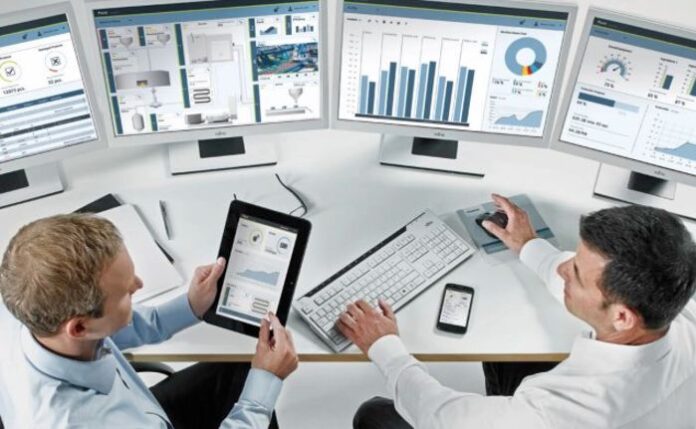Introduction to Contemporary Procurement Solutions
Modern organizations encounter significant challenges when purchasing goods and services. Tech in procurement has revolutionized how companies handle tender processes entirely. Organizations now leverage sophisticated software to streamline purchasing operations. This transformation has enhanced procurement speed and transparency. Digital solutions enable companies to operate more efficiently daily.
Organizations can now manage multiple tenders simultaneously. Technology has eliminated human errors that previously occurred. Intelligent purchasing systems enable companies to select superior options rapidly. These platforms reduce both time and costs for organizations. Contemporary procurement solutions are user-friendly and intuitive.
Exploring Advanced Procurement Technology
Technology has transformed traditional supplier purchasing methods. Digital platforms now manage everything from vendor evaluation to contract execution. Intelligent algorithms help identify optimal suppliers efficiently. These platforms provide current data to support better decision-making. Companies can reach decisions more rapidly than previously possible.
Artificial intelligence significantly influences modern purchasing platforms. Machine learning analyzes vendor performance and forecasts outcomes. Cloud-based systems enable remote work capabilities globally. These innovations have made purchasing more strategic and systematic. Reduced paperwork allows more focus on critical business operations.

Essential Components of Tender Management
Tender Management Software includes crucial components that simplify purchasing processes. Automated workflow systems minimize manual operations in routine tasks. Document control maintains all tender records securely and systematically. Real-time collaboration features connect team members across locations. These components facilitate improved team coordination.
Sophisticated reporting capabilities demonstrate procurement process effectiveness. Vendor assessment modules evaluate supplier capabilities objectively. Budget monitoring features track expenditures throughout purchasing cycles. Integration capabilities connect with other enterprise software platforms. All components function collectively to streamline procurement operations.
Advantages of Digital Procurement Platforms
Digital purchasing platforms provide substantial advantages over traditional approaches. Cost reductions result from automated processes and improved vendor negotiations. Time efficiencies emerge from streamlined workflows and expedited approvals. Risk management improves through enhanced vendor evaluation and compliance monitoring. Organizations experience positive outcomes shortly after implementing these platforms.
Enhanced transparency fosters trust among stakeholders and suppliers. Data-informed decisions result in superior outcomes and strategic benefits. Stronger supplier partnerships develop through improved communication systems. Competitive advantages emerge from faster and more efficient purchasing operations. These advantages support organizational growth and success.
Deployment Strategies for Achievement
Effective deployment requires thorough planning and stakeholder engagement. Organizations should begin with comprehensive requirement analysis. Training initiatives help employees adapt to new technological tools. Change management approaches ensure smooth transitions from legacy systems. Proactive planning prevents complications during implementation.
Phased rollouts minimize disruption to existing purchasing operations. Continuous feedback gathering helps identify improvement opportunities. Performance monitoring ensures systems meet organizational objectives. Ongoing optimization maximizes technology investment returns. Success results from dedicated time and careful execution.
Addressing Common Implementation Obstacles
Tech in procurement often encounters resistance from traditional purchasing teams. Adequate training and support help overcome these obstacles. Data migration from legacy systems requires careful coordination. Security concerns need to be addressed through robust cybersecurity protocols. Effective communication resolves most implementation issues.
Integration difficulties occur when connecting with existing enterprise systems. Vendor selection becomes crucial for long-term achievement. Budget constraints may limit the technology implementation scope. Regular system maintenance ensures continued performance and security. Most obstacles can be resolved through patience and strategic planning.
Emerging Trends in Procurement Technology
Innovative technologies continue shaping the procurement process evolution. Artificial intelligence will enhance predictive capabilities and decision-making processes. Blockchain technology provides improved transparency and security features. Internet of Things devices will deliver real-time supply chain visibility. These trends will reshape how organizations conduct purchasing activities.
Mobile-first platforms will enable purchasing capabilities for users anywhere. Sustainability features will help organizations achieve environmental objectives more effectively. Advanced analytics will provide deeper procurement performance insights. These trends will further transform how businesses manage their purchasing requirements. The outlook for procurement technology remains promising.
Evaluating Success and Investment Returns
Organizations must monitor key performance indicators to assess success accurately. Cost savings provide the most apparent return on investment measurements. Process efficiency improvements demonstrate operational benefits clearly to leadership. Supplier performance metrics indicate relationship quality enhancements over time. Quantitative data helps validate technology investment effectiveness.
Compliance rates demonstrate how well systems meet regulatory standards. User adoption rates reflect system acceptance among team members. Time-to-tender completion measures process speed improvements precisely. These metrics help justify technology investments and guide future enhancements. Proper measurement leads to improved outcomes.
Security and Information Protection
Data security remains paramount in modern purchasing systems today. Organizations must safeguard sensitive vendor information from cyber threats. Secure authentication systems prevent unauthorized access to critical documents entirely. Regular security updates maintain system protection against emerging threats effectively. Multi-factor authentication provides additional security layers for user accounts.

Backup systems ensure data protection even during system failures automatically. Privacy controls safeguard both organizational and supplier information carefully. Audit trails monitor all system activities comprehensively for compliance purposes. These security measures establish trust among all system users consistently. Encryption technology protects data both stored and transmitted.
Training and User Acceptance
Proper training enables employees to utilize new technology effectively daily. Simplified training programs work better than complex technical courses consistently. Practical training sessions help users master system features quickly and efficiently. Regular refresher training maintains skills currency throughout the year. Video tutorials provide visual learning options for various learning preferences.
User support systems assist when issues arise during business hours. Clear instruction materials make learning accessible for all staff levels consistently. Feedback mechanisms help enhance training programs over time effectively. Quality training leads to improved system adoption and success rates. Online help desks offer immediate assistance when users require support.
Integration with Current Systems
Modern Tender Management Software must operate with other business systems seamlessly. Integration connects purchasing data with accounting and inventory systems automatically. Smooth data flow reduces duplicate entry and errors significantly. Real-time synchronization maintains all systems updated automatically without delays. Database connections ensure information consistency across all business platforms.
API connections enable different software applications to share information easily today. Custom integration solutions address specific business requirements effectively and efficiently. System compatibility verification prevents technical issues before they begin completely. Proper integration improves overall business efficiency and productivity substantially. Cloud-based integration provides flexibility and scalability for expanding businesses.
Implementation Best Practices
Successful implementation follows proven best practices from industry professionals worldwide. Begin with pilot projects before the complete system deployment starts. Secure leadership support to ensure adequate resources and commitment throughout. Establish clear objectives and timelines for all implementation phases carefully. Risk evaluation helps identify potential issues before they become serious problems.
Regular progress assessments help identify and resolve issues early, effectively. User feedback guides system improvements and feature additions continuously. Process documentation helps future users understand the system better. These practices increase the chances of successful technology adoption significantly. Change management strategies help employees adapt to new workflows smoothly.
Conclusion on Digital Procurement
Tech in procurement has fundamentally transformed how organizations approach tender management today. Modern businesses cannot afford to overlook these technological advances anymore. The future belongs to organizations that embrace digital transformation completely. Smart procurement systems will continue evolving to meet changing business requirements. Technology will keep making procurement simpler and more efficient.
Companies that invest in purchasing technology gain competitive advantages over competitors. These systems reduce costs while improving process quality substantially. Strategic implementation ensures maximum benefits from technology adoption efforts. The journey toward digital purchasing excellence begins with appropriate technology choices. Organizations must stay current with technology trends to remain competitive. Follow DPworldnews for more updates.





